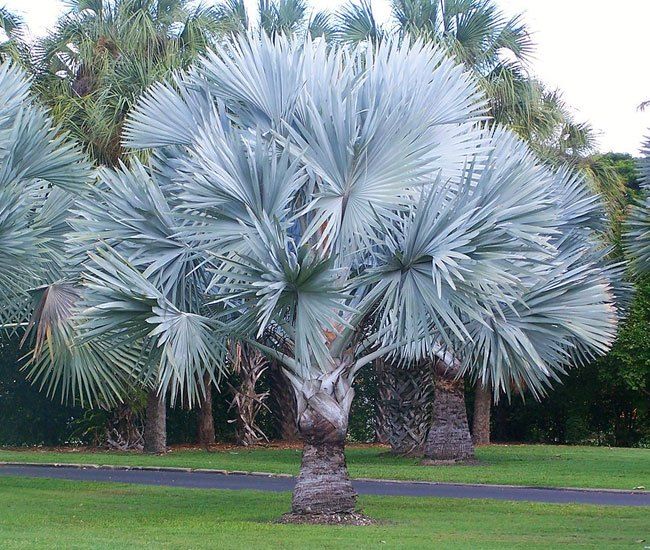The Dwarf Bismarck Palm is very ornamental and beautiful within the landscape. With its glorious, fan-shaped leaves, compact nature, and high growth rate, one of the most sought after palms for any gardener and landscaper, it doesn’t take much to see why this palm grows into something so popular. If you are thinking about planting one or simply want to know more, this guide will give you everything you need to know.
1. Overview of the Dwarf Bismarck Palm
What is a Dwarf Bismarck Palm?
The Dwarf Bismarck Palm (Bismarckia nobilis var. dwarf) is a smaller variation of the Bismarck Palm, which is native to Madagascar. It is a slow-growing, compact palm tree known for its silvery-blue fronds, making it an ornamental centerpiece in gardens and landscapes. While the full-sized Bismarck Palm can grow up to 60 feet tall, the dwarf variety typically reaches a height of around 6-10 feet, making it more manageable for smaller spaces.
Key Features
- Scientific Name: Bismarckia nobilis (Dwarf variety)
- Common Names: Dwarf Bismarck Palm, Silver Palm
- Family: Arecaceae
- Growth Habit: Compact and slow-growing
- Foliage Color: Silvery-blue to green
2. Appearance and Growth
Unique Foliage
One of the most attractive features of the Dwarf Bismarck Palm is its large, fan-shaped leaves. These fronds can span up to 4 feet in diameter, creating a striking visual effect in the landscape. The silvery-blue hue of the leaves is unique to this species, giving it a distinct and exotic appearance.
Size and Growth Rate
The Dwarf Bismarck Palm is slow-growing, making it ideal for those looking for a low-maintenance palm tree. It can take several years to reach its full height of 6-10 feet. Its trunk is sturdy, typically grayish in color, and adds to its overall robust look.
3. Planting and Care
Ideal Growing Conditions
The Dwarf Bismarck Palm thrives in warm, tropical, or subtropical climates. It is best suited for USDA hardiness zones 10-11. However, it can also tolerate light frost in some cases.
- Sunlight: Full sun exposure is essential for optimal growth. The palm requires at least 6-8 hours of direct sunlight per day.
- Soil: Well-draining soil is crucial to prevent waterlogging, which can lead to root rot. Sandy soil with a slightly acidic to neutral pH is ideal.
- Watering: While the palm is drought-tolerant once established, it should be watered regularly during its initial stages of growth. Water the plant deeply but allow the soil to dry out between watering.
Maintenance and Pruning
The Dwarf Bismarck Palm is relatively low maintenance. Pruning is not often required, except for the removal of dead or damaged fronds. Be cautious when trimming the leaves, as they can be sharp. Additionally, applying a balanced palm fertilizer 2-3 times a year can help maintain its health and appearance.
4. Common Uses in Landscaping
The Dwarf Bismarck Palm is often used as a focal point in landscape design due to its unique appearance. Its compact size makes it perfect for smaller gardens, patios, and courtyards. It can be planted as a standalone specimen or in a group to create a tropical or desert-style garden. It also pairs well with other drought-tolerant plants like cacti and succulents.
5. Potential Issues and Pests
Pests
While the Dwarf Bismarck Palm is generally resistant to most pests, it can occasionally be affected by:
- Spider Mites: These tiny pests can cause discoloration and damage to the fronds.
- Palm Weevils: These can bore into the trunk and weaken the plant.
- Scale Insects: These pests can attach themselves to the leaves, causing yellowing and loss of vigor.
Diseases
The most common disease that affects this palm is Ganoderma Butt Rot, a fungal infection that can cause the palm to decay from the base up. To prevent this, ensure proper drainage and avoid overwatering.




